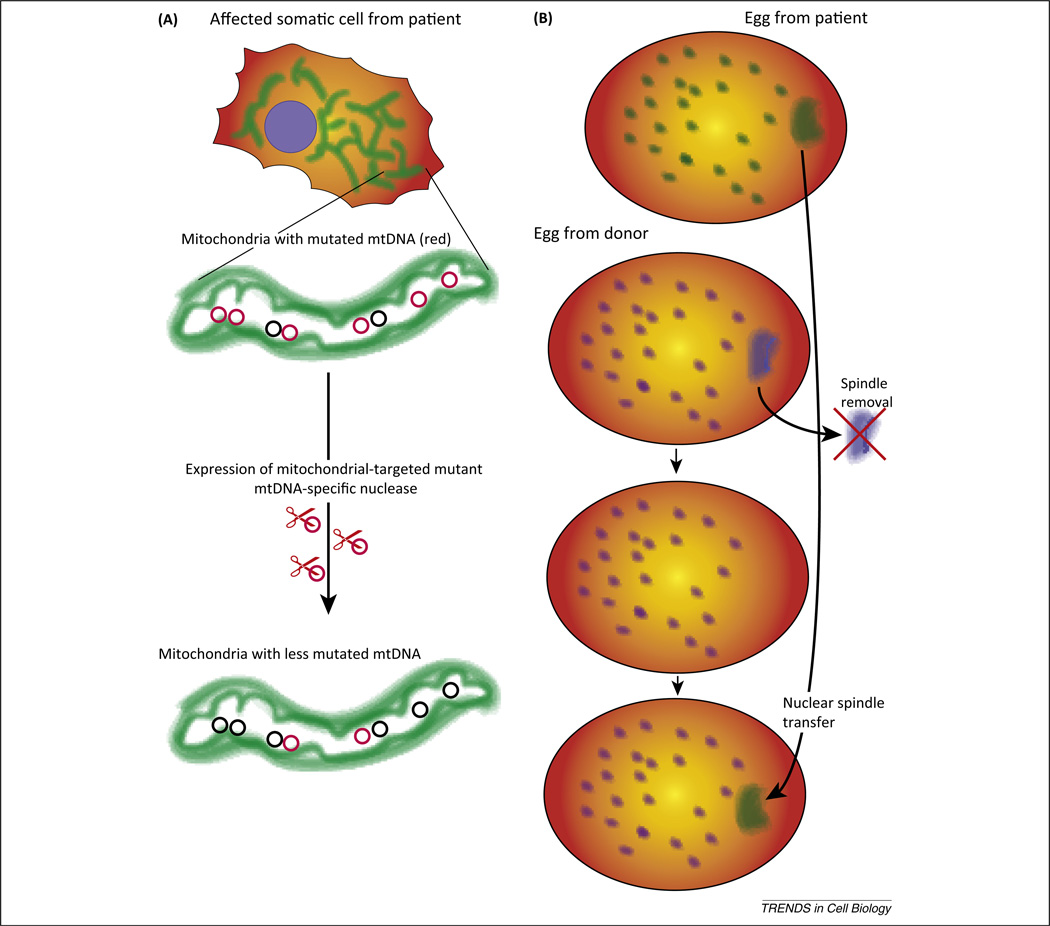Figure 1.
Novel approaches for the manipulation of mitochondrial genomes in tissues and embryos. In the past few years, promising approaches have been developed for the genetic therapy and prevention of mitochondrial DNA (mtDNA) disorders. (A) Use of mitochondrion-targeted designer nucleases to eliminate or reduce levels of mutated mitochondrial genomes. Because mitochondria have a copy number-control mechanism, the elimination of a subpopulation of mtDNA is quickly compensated by an increase in replication of the residual mtDNA, in this case mostly wild type molecules. (B) Replacement of the nuclear spindle in an oocyte that functions as a mtDNA donor.

